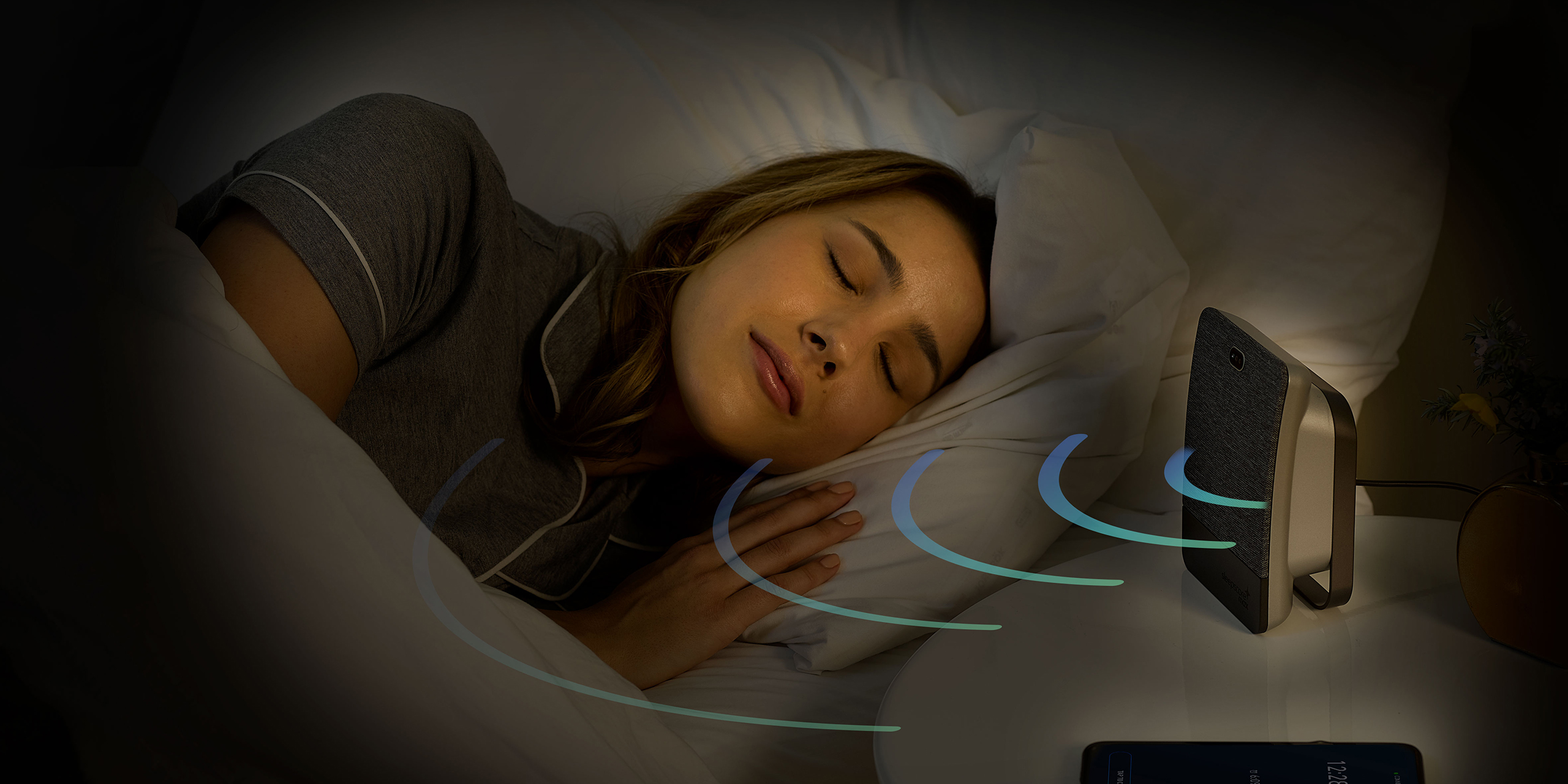Sleep Tracker: How The SleepScore Max Works

As you start logging more nights of sleep, you’ll notice that every night looks different. That’s because SleepScore Max monitors your sleep with pinpoint accuracy, picking up your transitions through the sleep stages and awakenings every night. You might be wondering how the technology works and why you should trust its accuracy. In this article, we’ll explore how SleepScore Max is able to track your sleep with precision, and the history of our research and technology development through the years.
How the Technology Works
SleepScore Max is powered by ResMed Sensor Technologies and is a revolutionary, non-contact sleep sensor that works by reading and detecting the movements of your upper body while you sleep. The device uses safe, ultra-low power radio waves (1/10 of Bluetooth®) in a way similar to echolocation, the same system that bats use to fly and hunt. Throughout the night, SleepScore Max sits on your nightstand and measures your breathing and movements. In the morning our proprietary algorithm analyzes your sleep and provides you with a daily SleepScore (between 0-100) and a detailed breakdown of how you slept, including how long you spent in each sleep stage and how many times you woke up.
How Accurate is my SleepScore Max?
ResMed, the leaders in sleep science, spent more than 10 years developing SleepScore technology. SleepScore has been tested and validated against Polysomnography (PSG) the gold standard of measuring sleep including deep sleep, and over two million nights of sleep data help to inform the algorithm. The results on its accuracy have been published in over 10 scientific peer-reviewed papers, and scientists worldwide have applied the technology in their own academic and clinical research. This device, powered by SleepScore by ResMed technology, is undoubtedly the most accurate non-contact sleep tracker on the market today.
History of ResMed
ResMed and sleep have been synonymous with one another since their formation in 1989, but their research goes back even farther than that. Professor Colin Sullivan and his colleagues at the University of Sydney developed the first continuous positive airway pressure (CPAP) device back in 1981. This was the first successful non-invasive treatment for obstructive sleep apnea, and ResMed was founded to commercialize the device for the millions of people with undiagnosed sleep apnea. Since then, ResMed has worked to develop lighter, quieter, more comfortable, and more connected solutions to help millions of people sleep, breathe, and live better.
Originated by ResMed and developed by SleepScore Labs, SleepScore Max is the latest technology to provide users with the tools to learn about their own sleep behaviors, and arm them with the information and advice necessary to get their best night’s rest.